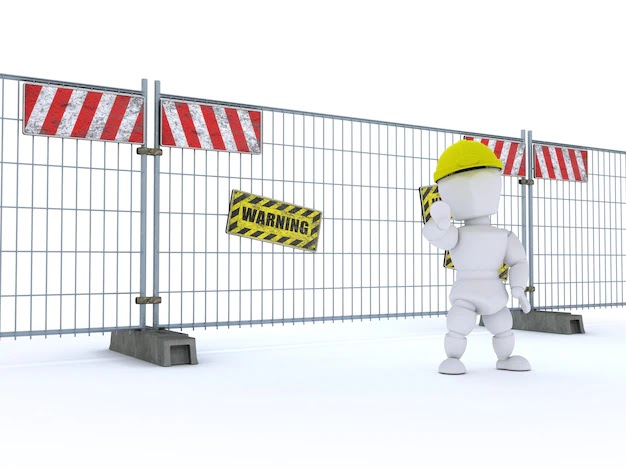
Emergency Communication Plans
I. Understanding the Importance of Emergency Communication Plans
An emergency communication plan is a pre-established framework that outlines how information will be shared during a crisis. It’s designed to ensure that everyone involved—whether family members, employees, or community members—knows what to do, where to go, and how to stay informed.
1. Why Are Emergency Communication Plans Critical?
Crises can occur suddenly and without warning, disrupting normal communication channels and creating chaos. Without a clear plan, misinformation, delays, and confusion can compound the challenges of the situation. An effective communication plan helps to:
- Coordinate Responses: Ensures that everyone involved is on the same page, leading to a more coordinated and efficient response.
- Provide Clear Instructions: Reduces confusion by providing clear, concise instructions on what to do and where to go.
- Maintain Calm: Helps to maintain calm by reducing uncertainty and providing reassurance through timely updates.
- Ensure Safety: Facilitates the safe evacuation or sheltering of individuals by ensuring that everyone has access to critical information.
2. Real-Life Examples of Emergency Communication Failures
History is replete with examples of crises where poor communication exacerbated the situation. For instance, during natural disasters like Hurricane Katrina, communication breakdowns led to delays in rescue efforts and increased the death toll. These examples underscore the vital importance of having a robust communication plan in place.
II. Key Elements of an Emergency Communication Plan
Creating an effective emergency communication plan involves several key elements. Each component plays a crucial role in ensuring that information is transmitted clearly and quickly to all relevant parties.
1. Identification of Stakeholders
The first step in developing an emergency communication plan is identifying all relevant stakeholders. These are the people or groups who will need to receive or disseminate information during a crisis.
- Internal Stakeholders: This includes employees, management, and other internal personnel who need to be informed about the crisis and the steps they need to take.
- External Stakeholders: This includes customers, clients, suppliers, emergency services, government agencies, and the general public, depending on the nature of the crisis.
2. Communication Channels
Next, determine the communication channels that will be used to share information. These channels should be diverse to ensure redundancy in case one method fails.
- Primary Channels: These are the main methods of communication, such as email, text messages, phone calls, or radio broadcasts.
- Secondary Channels: Backup methods include social media, websites, or public announcement systems that can be used if primary channels are compromised.
- Tertiary Channels: For extreme situations where traditional channels might not work, consider satellite phones, two-way radios, or even physical notices.
3. Clear and Concise Messaging
The messages communicated during an emergency should be clear, concise, and actionable. Avoid technical jargon and ensure that instructions are easy to understand.
- Standardized Templates: Pre-create message templates for different types of emergencies to speed up the communication process.
- Multilingual Communication: If your audience includes non-English speakers, ensure that messages are available in multiple languages.
- Consistent Updates: Regularly update information as the situation evolves to keep everyone informed and reduce uncertainty.
4. Roles and Responsibilities
Clearly define the roles and responsibilities of individuals or teams during a crisis. Everyone should know who is responsible for what, ensuring that no critical tasks are overlooked.
- Crisis Communication Team: Establish a dedicated team responsible for managing communication during a crisis. This team should be trained and prepared to act quickly.
- Spokespersons: Designate official spokespersons who will communicate with the media or the public to ensure consistent messaging.
- Coordinators: Assign coordinators who will ensure that information flows smoothly between different stakeholders and channels.
5. Testing and Drills
An emergency communication plan is only effective if it has been tested and refined. Regular drills and tests help identify weaknesses and ensure that everyone knows how to implement the plan.
- Simulations: Conduct regular emergency simulations to test the plan’s effectiveness and make necessary adjustments.
- Feedback Mechanisms: After each drill, gather feedback from participants to identify areas for improvement.
- Continuous Improvement: Use the results of drills and actual emergencies to continuously refine and improve the communication plan.
III. Establishing Communication Protocols During Crises
Once the foundational elements of the emergency communication plan are in place, it’s essential to establish specific communication protocols that can be activated during a crisis. These protocols guide how information will be shared, who will share it, and how it will be received.
1. Activation Protocols
Determine how and when the communication plan will be activated. This could be triggered by specific events, such as a natural disaster warning, a security breach, or a public health emergency.
- Trigger Points: Clearly define the events or conditions that will activate the communication plan.
- Immediate Actions: Outline the immediate actions that need to be taken once the plan is activated, such as alerting the crisis communication team.
2. Message Delivery Protocols
Establish protocols for how messages will be delivered during the crisis. This includes who will draft the messages, who will approve them, and how they will be disseminated.
- Message Approval: Ensure that all messages are approved by the crisis communication team before dissemination to avoid misinformation.
- Timing and Frequency: Determine how often updates will be provided and ensure that messages are delivered promptly.
3. Two-Way Communication
Effective communication during a crisis is not just about sending out information; it’s also about receiving feedback and responding to it.
- Feedback Channels: Set up channels for receiving feedback or reports from stakeholders, such as hotlines, email addresses, or social media platforms.
- Response Teams: Assign teams to monitor these channels and respond to inquiries or concerns in real-time.
4. Coordination with External Agencies
In many crises, coordination with external agencies such as emergency services, government bodies, or neighboring organizations is crucial.
- Liaison Officers: Appoint liaison officers to communicate directly with external agencies and ensure that information is shared accurately and promptly.
- Unified Messaging: Work with external agencies to ensure that messaging is consistent across all parties involved in the response.
5. Post-Crisis Communication
After the immediate crisis has passed, it’s important to maintain communication to manage the aftermath and recovery.
- Debriefings: Conduct debriefings with all stakeholders to review what happened, what worked, and what didn’t.
- Ongoing Updates: Provide ongoing updates as recovery efforts continue, keeping all stakeholders informed of progress and any further actions needed.
IV. Best Practices for Emergency Communication Plans
While the specific details of an emergency communication plan will vary depending on the organization or community, some best practices apply universally.
1. Keep It Simple: In the chaos of a crisis, simplicity is key. The communication plan should be straightforward and easy to follow, with clear instructions and minimal jargon.
2. Redundancy Is Critical: Don’t rely on a single communication channel. Ensure that there are multiple ways to reach people in case one method fails.
3. Accessibility for All: Ensure that the communication plan is accessible to everyone, including people with disabilities or those who speak different languages.
4. Regular Updates: A communication plan is not a one-time effort. It should be regularly reviewed and updated to reflect changes in personnel, technology, or potential risks.
5. Train and Educate: Training is essential to ensure that everyone understands the plan and their role within it. Regular education and drills help reinforce the protocols and ensure readiness.

Conclusion
An effective emergency communication plans is a vital tool for managing crises and protecting lives. By establishing clear communication protocols, identifying key stakeholders, and regularly testing the plan, organizations, and communities can respond to emergencies with greater confidence and coordination. In an unpredictable world, being prepared with a well-thought-out communication plan is not just a good practice—it’s a necessity.
FAQ
Ques 1: What is an emergency communication plan, and why is it important?
Ans: An emergency communication plan is a structured framework that outlines how information will be shared during a crisis. It ensures that all stakeholders receive timely and accurate information, reducing confusion and enabling a coordinated response. The plan is crucial because it helps manage the flow of communication, minimizes panic, and ensures the safety of individuals by providing clear instructions during emergencies.
Ques 2: Who should be included in an emergency communication plan?
Ans: The plan should include both internal and external stakeholders. Internal stakeholders typically consist of employees, management, and crisis response teams. External stakeholders might include customers, suppliers, emergency services, government agencies, and the general public, depending on the nature of the crisis. Identifying these groups ensures that all necessary parties are informed and can respond appropriately.
Ques 3: What communication channels should be used during a crisis?
Ans: A variety of communication channels should be utilized to ensure redundancy and reliability. Primary channels might include emails, text messages, and phone calls, while secondary and tertiary channels could include social media, public announcement systems, satellite phones, and two-way radios. Using multiple channels ensures that communication remains effective even if one method fails.
Ques 4: How often should an emergency communication plan be tested?
Ans: An emergency communication plan should be tested regularly, at least annually, through drills and simulations. These tests help identify any weaknesses in the plan and ensure that all stakeholders are familiar with their roles. Continuous testing and refinement improve the plan’s effectiveness and preparedness.
Ques 5: What steps should be taken after the immediate crisis has passed?
Ans: Post-crisis communication is essential for managing the aftermath and recovery. Steps should include conducting debriefings with all stakeholders, providing ongoing updates about recovery efforts, and addressing any lingering concerns or questions. Reviewing and refining the communication plan based on the crisis experience is also crucial to improving future responses.







Do Leave Your Comment